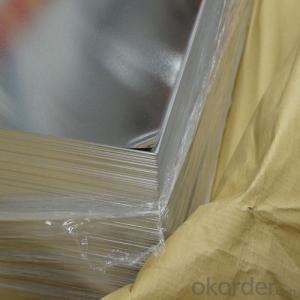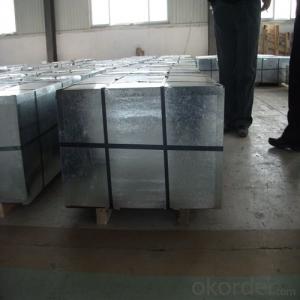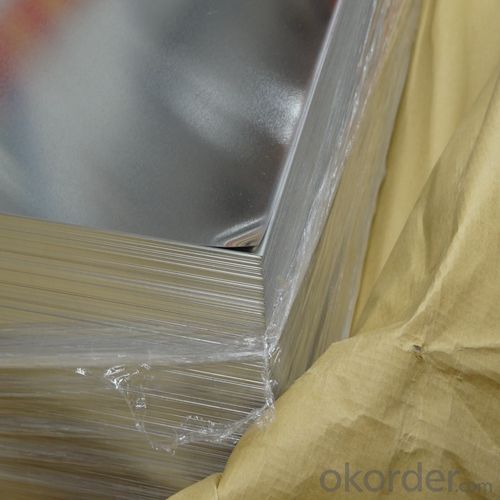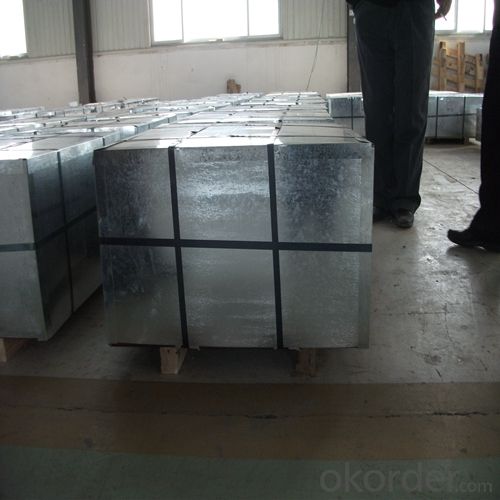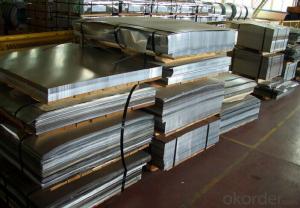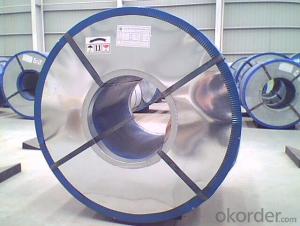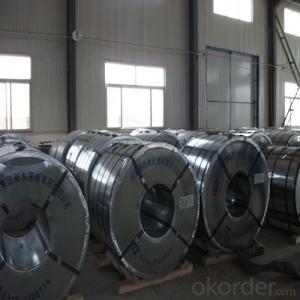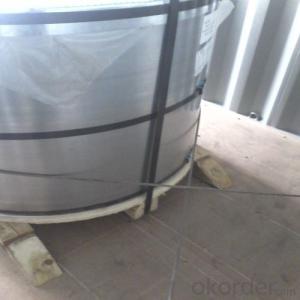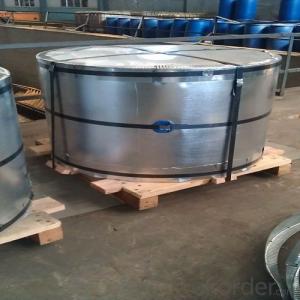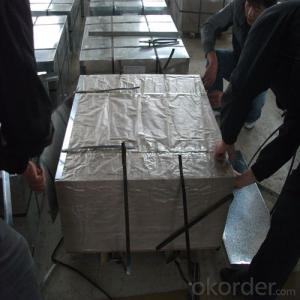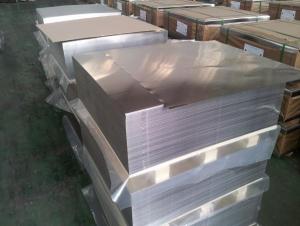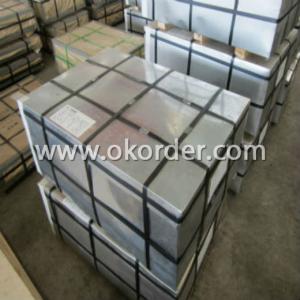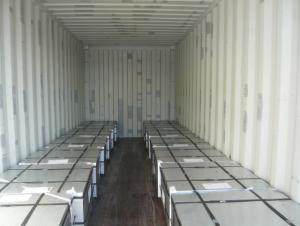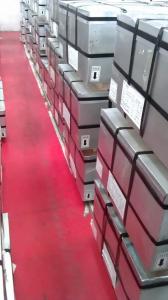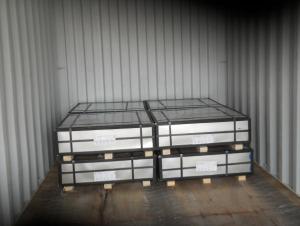Electrolytic Tinplate of High Quality for Metal Container 0.185mm
- Loading Port:
- Shanghai
- Payment Terms:
- TT OR LC
- Min Order Qty:
- 50 m.t.
- Supply Capability:
- 15000 m.t./month
OKorder Service Pledge
OKorder Financial Service
You Might Also Like
1.Structure of Electrolytic Tinplate of High Quality for Metal Container 0.185mm Description
Electrolytic Tinplate is a thin steel sheet coated by tin. It has an extremely beautiful metallic luster as well as excellent properties in corrosion resistance, solder ability, and weld ability.
2.Main Features of the Electrolytic Tinplate of High Quality for Metal Container 0.185mm
Electrolytic Tinplate undoubtedly enjoys the pride of place as a packaging medium especially for food. It owes its unique position to its "nine layer sandwich structure", each of which contributes to its eminence as a packing material. The steel base of electrolytic tinplate provides the necessary strength and formability for can fabrication. The tin-iron alloy layer provides the bond between the steel and free tin layer. The free tin layer is not only responsible for the attractive bright finish and ease of solderability but is also non-toxic- a factor of vital importance in food packaging!
Tinplate is also widely used for making all types of containers such as food cans, beverage cans, and artistic cans, tea cans, painting cans, chemical package cans and dry food package cans, metal printing etc. Its applications are not limited to containers; recently, electrolytic tinplate has also been used for making electrical machinery parts and many other products.
3.Electrolytic Tinplate of High Quality for Metal Container 0.185mm Images
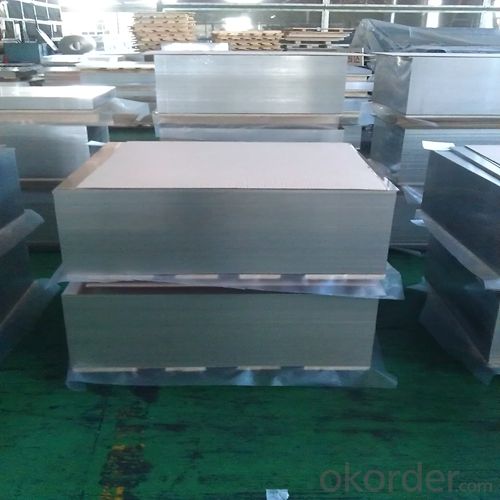
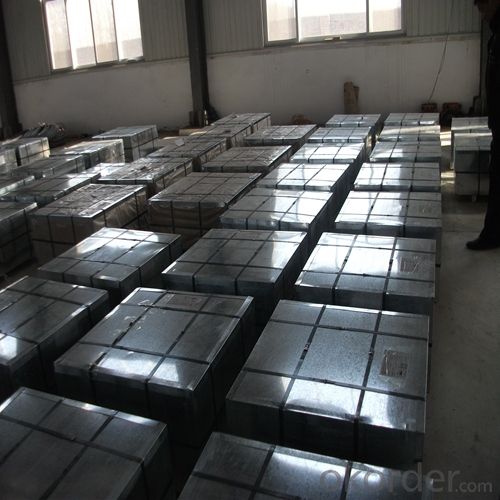
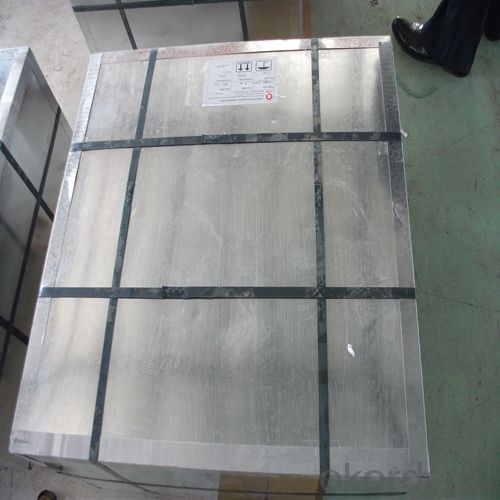
4.Electrolytic Tinplate of High Quality for Metal Container 0.185mm Specification
Standard:BS EN 10202
Material: SPCC
Thickness:0.185mm
Width:700mm
Temper: T4
Annealing: CA
Coil Inner Diameter: 508mm
Weight: 6-10 tons/coil
Passivation:311
Oil: DOS
Surface: silver
5.FAQ of Electrolytic Tinplate of High Quality for Metal Container 0.185mm
1. What is the delivery time for your prime quality tinplate?
Usually 35 days after order confirmation.
2. What is your Minimum Order Quantity?
Usually MOQ is 50tons for one single size, for trial order, it can be 25 tons.
3. What is the payment term?
The most common we use is L/C at sight or TT. We can also try use other terms.
- Q: What is tin plate?
- Tinplate is classified according to thickness and tinning. Generally speaking, in order to save costs, the current industrial production will reduce the iron thickness and tin content while guaranteeing the reliable strength of the package. One is to use less or even no tin tin (chrome iron), by 50s the development of hot dip tin plating tin to the present, China has not see the hot dip in the use of tinplate cans.
- Q: How does tinplate compare to plastic-coated steel in terms of properties and applications?
- Tinplate and plastic-coated steel have different properties and applications. Tinplate is a thin, lightweight steel sheet coated with a layer of tin, which provides excellent corrosion resistance, solderability, and aesthetic appeal. It is commonly used in food and beverage packaging, as well as in the manufacturing of aerosol containers, electronic components, and various consumer products. On the other hand, plastic-coated steel is steel that is coated with a layer of plastic, typically through a process called extrusion. This coating enhances the steel's durability, impact resistance, and chemical resistance, making it suitable for applications that require protection against harsh environments or harsh handling. Plastic-coated steel is often used in construction, automotive, and electrical industries, where strength and corrosion resistance are crucial. In summary, tinplate is preferred for applications that require corrosion resistance, solderability, and a visually appealing finish, such as food packaging. Plastic-coated steel, on the other hand, is more suitable for applications that demand enhanced durability, impact resistance, and chemical resistance, like in construction or automotive industries.
- Q: What are the main challenges in tinplate coating thickness control?
- One of the main challenges in tinplate coating thickness control is achieving uniformity across the entire surface of the tinplate. The coating thickness must be consistent and within the desired range to ensure proper protection and functionality of the tinplate. Additionally, controlling the coating thickness requires precise measurement and monitoring techniques as well as the ability to adjust the coating process parameters in real-time to account for any variations or deviations. Another challenge is ensuring the adhesion of the coating to the tinplate surface, as poor adhesion can lead to coating defects and reduced performance. Lastly, controlling the coating thickness while maintaining cost-effectiveness can be a challenge, as it requires optimizing the coating process to minimize material waste and reduce production costs.
- Q: What are the different testing methods for tinplate packaging?
- Some of the different testing methods for tinplate packaging include visual inspection, leak testing, drop testing, compression testing, and corrosion resistance testing.
- Q: Can tinplate be used for packaging luxury goods?
- Yes, tinplate can be used for packaging luxury goods. Tinplate is a versatile material that offers several advantages, such as durability, strength, and an attractive appearance. It can be customized with various finishes, including high-quality printing and embossing, making it suitable for luxury packaging needs. Additionally, tinplate provides excellent protection against moisture, light, and other external factors, ensuring the preservation and presentation of luxury goods.
- Q: Can tinplate be used for bulk packaging?
- Yes, tinplate can be used for bulk packaging. Tinplate is a durable and corrosion-resistant material, making it suitable for storing and transporting large quantities of goods. It provides an effective barrier against moisture and oxygen, ensuring the preservation and quality of the packaged products. Additionally, tinplate is easily recyclable, making it an environmentally friendly choice for bulk packaging.
- Q: Can tinplate be used for decorative purposes?
- Yes, tinplate can be used for decorative purposes. It is often used in the production of decorative items like tin containers, tin signs, and tin ornaments due to its shiny and reflective surface. Additionally, tinplate can be easily printed on, allowing for intricate designs and patterns to be showcased on decorative items.
- Q: How does tinplate affect the overall product tamper-evident features?
- Tinplate enhances the tamper-evident features of a product by providing a secure and durable packaging material. The robustness and strength of tinplate make it difficult for unauthorized access or tampering, ensuring the integrity of the product. Additionally, tinplate can be sealed tightly, making it evident if the package has been opened or tampered with.
- Q: How is tinplate coated with food-grade materials?
- Tinplate is coated with food-grade materials through a process called electrolytic tinning. In this process, a thin layer of tin is electroplated onto the surface of the tinplate, creating a protective barrier between the metal and the food. This coating ensures that the tinplate is safe for food contact and prevents any undesirable reactions between the metal and the food.
- Q: How does tinplate contribute to the protection of agricultural products?
- Tinplate contributes to the protection of agricultural products by providing a durable and corrosion-resistant packaging material. It helps to prevent contamination, moisture, and oxygen from reaching the products, ensuring their freshness and quality. Additionally, tinplate's ability to withstand extreme temperatures and physical damage further safeguards agricultural goods during storage and transportation.
Send your message to us
Electrolytic Tinplate of High Quality for Metal Container 0.185mm
- Loading Port:
- Shanghai
- Payment Terms:
- TT OR LC
- Min Order Qty:
- 50 m.t.
- Supply Capability:
- 15000 m.t./month
OKorder Service Pledge
OKorder Financial Service
Similar products
Hot products
Hot Searches
Related keywords

